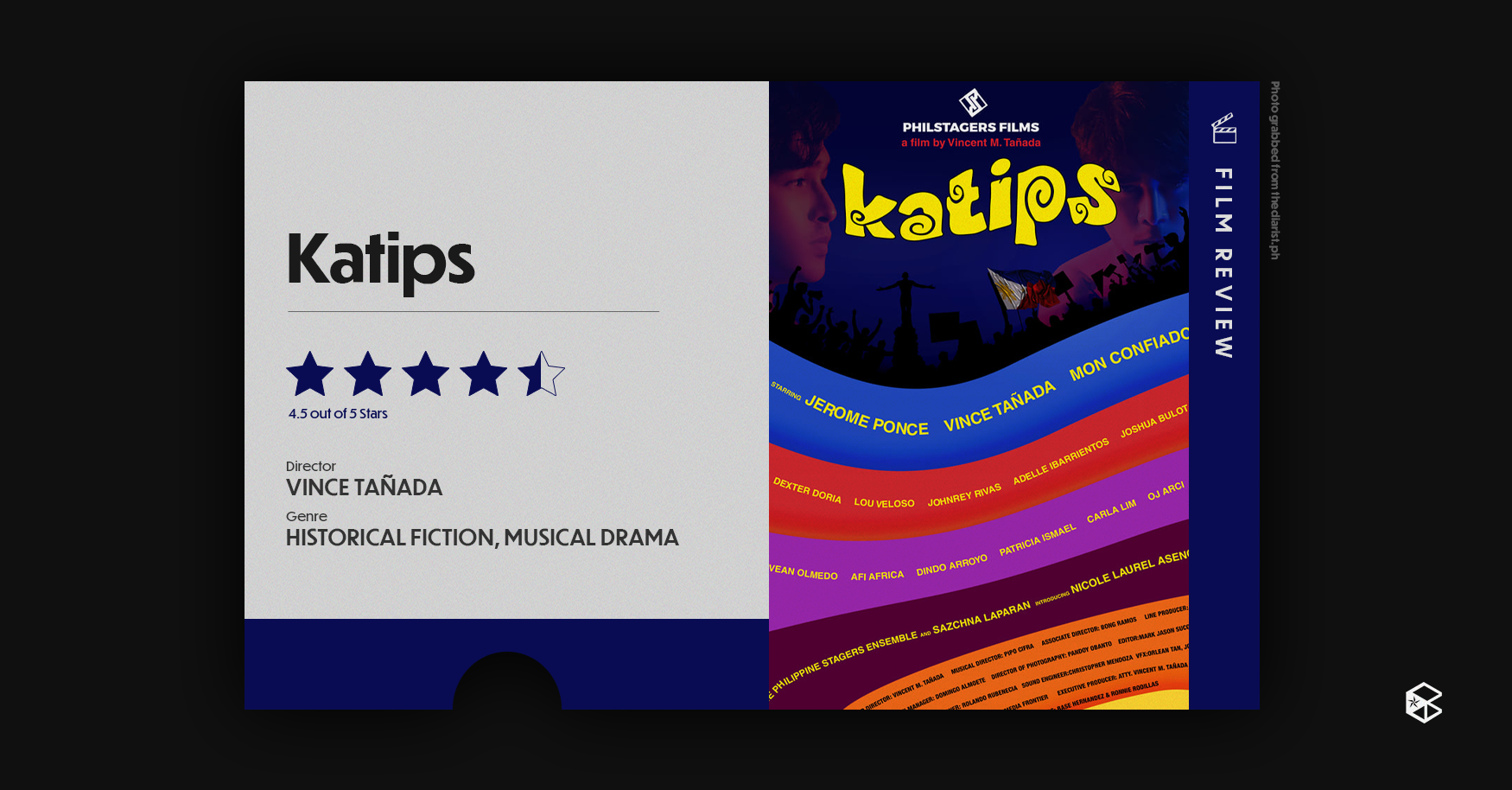Filipino actor and writer Vince Tañada’s Katips was shown for a limited re-release starting Aug. 3. The film tells the story of teenage activists, self-identified as the “New Katipuneros,” in their fight against the imposition of Martial Law in the country.
Katips is told as a history lesson in a museum through a guide named Lira (Sazchna Laparan), who tells the story of the Filipinos during Martial Law. Harking back to these events, it begins with a picket rally involving the film’s protagonists denouncing the government一seen in the rally are Greg (Jerome Ponce), Ka Panyong (Vince Tañada), Alet (Adelle Ibarrientos), Susie (Vean Olmedo), Estong (Joshua Bulot), and Art (Johnrey Rivas), along with multiple church members including Sister Josie (Patricia Ismael) and Sister Claire (Dexter Doria).
Right off the bat, government officials stormed through the rally and arrested Ka Manding (Nelson Mendoza) for sedition and rebellion, with the latter meeting an untimely demise by the hands of the officials.
Before this, however, Ka Manding mentioned the arrival of his daughter Lara (Nicole Laurel Asensio) from the United States. He tells Greg not to let Lara know of her father’s wherabouts. The film follows an initially unknowing Lara beginning to understand the truth of the country through brutal experiences with her newfound friends under the dictatorship of Ferdinand Marcos Sr.
Through love, war, and music
Save for the occasional unsynchronized lip-syncing, the film manages to tell a tale of the young heroes through music. Although the protagonists are shown in generally serious and severe situations, romance was still able to bloom despite these circumstances. Taking inspiration from musical films such as La La Land, the couples of the film tell their stories through cheesy, catchy lines, and dance moves that get you moving along the same way Sebastian and Mia did. The best example would have to be the song “Sa Gitna ng Gulo,” wherein the four couples echo lines and finish each other's sentences. It is undeniably a scene that makes you forget the harrowing theme of the film.
As the plot moves forward, the grim reality these lovers are all existing in is represented through an eerie reminder of the “Manhid” reprise. Death and loss of a loved one and the feeling of utter heartbreak was perfectly expressed through the song. And thus, this begs the question: was it this beautiful and painful for each Filipino living in this time?
History is not a product of hearsay
Katips is a fictional story that tells the real history of Filipinos during Martial Law. What’s so endearing about the film is how it rarely mentions any of the Marcoses and Aquinos, and how it solely focuses on the individual experiences of those living under the rule of former dictator Marcos Sr. It gives recognition to the new “Katipuneros’” contribution to the democracy of the country today.
The film will surely receive more criticism with its lackluster portrayal of artistic cinematography, but can it be blamed when the goal of its director is to counter state propaganda with a scanty budget? The messages were profoundly delivered, and the anger and pain experienced during Martial Law were validated, even with a script that included comic relief.
Backed up by history, Tañada did not dare to censor the grotesque torture experienced by the abducted activists before their murder. There may be some who would agree that the scenes were not necessary and were too disturbing for the masses, but these are what makes this film all the more important. The truth remains what it is一true.
Don’t let them look through the curtains
American singer-songwriter Melanie Martinez once portrayed how reality can be distorted by framing a disaster with false perfection through her song “Dollhouse.” Similarly, Lara reminds us how the suppression of press freedom affects the eyes of the world in our country, constantly opposing the first-hand feedback of her newfound companions Greg, Ka Panyong, and Alet Lagunsilad, and trusting the approved media she had been reading abroad. It’s quite clear that there are those who will only believe once it has already happened to them.
As plainly stated in the film, “Don’t wait until it happens to you.”
As a highly anticipated film, it is apparent that many viewers find Katips unsatisfactory. This disappointment even led to comparisons to past political masterpieces such as Liway and Heneral Luna. Given the theme and approach of the film, it is safe to say that this is simply an unfair and unnecessary comparison.
Katips expressed extreme feelings and events through a series of musical pieces and this in itself deserves much recognition. It is not fair to criticize the film artistically, rather base it on the film’s intention and if this was achieved.
At the end, however, there is a deeper disappointment that you will feel once the realization of its ending sinks in. With the results of the 2022 National Election, it feels as though we spit in the graves of those who have sacrificed everything for our country.
If the film managed to make you feel uncomfortable with the conclusion, then it has served its purpose.
Overall, Katips is an eye-opener for the horrid truth of Martial Law, and Tañada did an amazing job adapting his play to the silver screen. This is the beginning of remembering that our history shall not easily be forgotten, changed, or revised.


